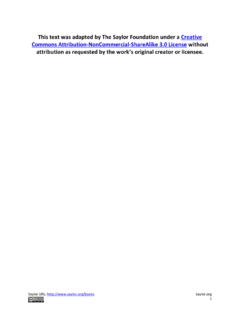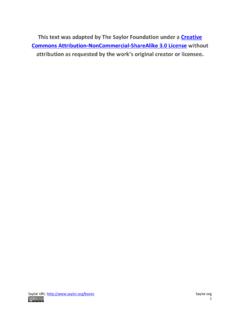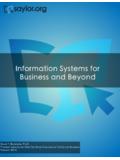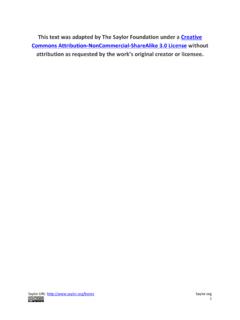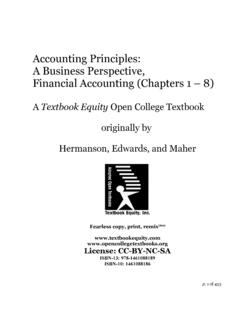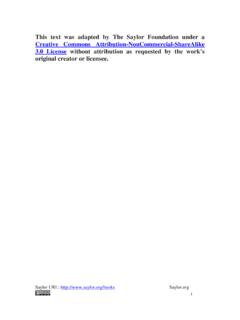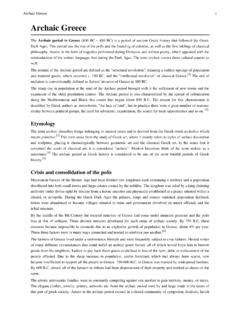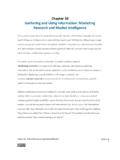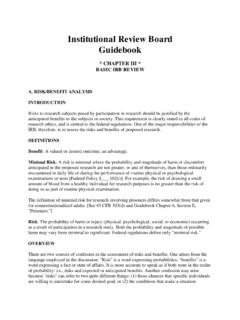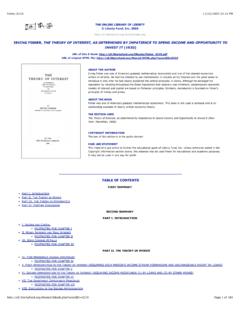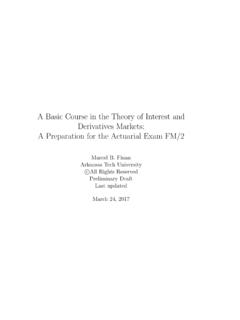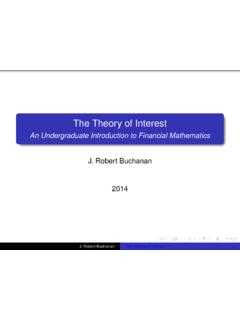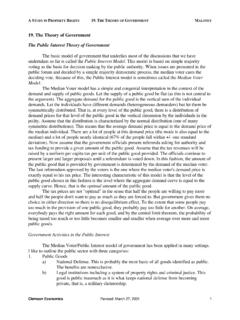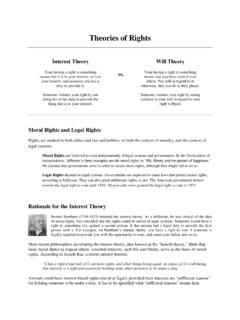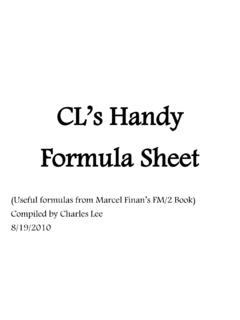Transcription of Synopsis of Interest Group Thoery - Saylor Academy
1 Synopsis of Interest Group Thoery Wednesday, October 25, 2006 at 02:21PM by NMcBeth (Reviewed by Dr. Kenneth Godwin, whose theoretical work is mentioned in this article.) Note: Please use Wikipedia or a source of your choice should you come across a term/person/event you don t understand or if you require more information. Interest Group formation and maintenance A discussion of Interest groups formation is difficult without referring to James Madison s writings in Federalist 10. He wrote that factions, whether representative of a minority or majority of the whole, unite around an Interest (Cigler & Loomis, 2002). Madison worried that elites would become too powerful an Interest , even take over the government, and assessed ways to avoid too much power in the hands of a few. In Federalist 10, he stated: There are two methods of curing the mischiefs of faction: the one, by removing its causes; the other, by controlling its effects.
2 There are again two methods of removing the causes of faction: the one, by destroying the liberty which is essential to its existence; the other, by giving to every citizen the same opinions, the same passions, and the same interests. Madison bases his solution around the checks and balances inherent in democracy by providing competition between interests, setting up a system allowing all interests into the policymaking schema, and therefore creating an environment whereby government supports factions (pluralism) (1787). This competition between factions allows government to choose between varying interests for the best policy actions. Redford and Martin, in Micropolitics and Subsystem Politics, indicate that even minimal regard for the equalitarian tenet of democratic morality requires decisions regarding interests be made with consideration of their effects on related or competing interests and on the diffused interests of the community as a whole (1985).
3 This prevents favoritism to the certain few. Government also needs interests to take the role of advocate as well as the role of watchdog over government agencies, as well as a check on each other Interest Group to Interest Group (Maxwell, et. al., 2000). Theodore Lowi further defines pluralism but uses the term liberalism when referring to factions that have many points of expanding access to all levels of government as well as the growth and multiplication of faction interests (1969). David Truman s theory of Interest Group liberalism asserts that lobbies form around factions and changed interests, such as new regulations, policy failure, or unfunded mandates. He pits one Group against the other and suggests that as interests divide, new groups form. Truman further indicates that groups form to advance their economic Interest .
4 Specifically, where private interests form, they engage in collective action or individuals create a groups that acts collectively or together toward a goal (Browne, 2002). Truman s bases his theory on pluralism where Interest groups are central participants in policymaking, particularly as society and government decentralization, complexity, disequilibrium, disruption, and specialization occur Source URL: Saylor URL: Attributed to [NMcBeth] Page 1 of 16and Interest groups form and expand (Cigler & Loomis, 2002; Browne, 2002). According to Cigler and Loomis (2002), as government changes, competing Interest groups provide a stabilizing effect on government, or continuity in a changing political world . Competition between groups decreases the likelihood of domination by elites within the system, as groups act as proxies for individual interests (Madison, 1787; Greenwald, 1977).
5 Even James Madison could see how factions might increase due to economics. By the time the Civil War was over, the specialization, complexity and expansion of technology in society rose, creating such interests as railroads and farmers forming groups competing against each other one monopolistic and the other asking government to provide limits on transportation prices. These economic factors, as well as advancing technology, the state of the economy, national defense, civil rights, labor and other emerging interests in the following years, created a need for increased legislation. Regulation over business/industry practices increases the complexity of government itself due to the formation of commissions, agencies, and additional regulation (Cigler & Loomis, 2002). According to Truman, change occurs over time depending on activating factors, it is not continuous, and relies on whether the Interest needs to protect or defend due to a threat in their position at the time.
6 New groups emerge to combat previously developed groups interests due to a particular cause or changes in society itself, often due to an inequality between ideals. These groups ebb and flow as issues come to the fore some groups having more power during one period than another. Some groups (particularly single issue groups) may dissolve after their issue is resolved, or move on to encompass other issues. Maintenance of these organizations is seemingly dependent on these variables. Mancur Olson s economic model contends that Truman s theory is limiting and does not consider the proclivities of the individual and the logic of collective action (Cigler & Loomis, 2002). James Madison s wrote eloquently about individual proclivities, actions, and factions forming in Federalist 10: The latent causes of faction are thus sown in the nature of man; and we see them everywhere brought into different degrees of activity, according to the different circumstances of civil society.
7 A zeal for different opinions concerning religion, concerning government, and many other points, as well of speculation as of practice; an attachment to different leaders ambitiously contending for pre-eminence and power; or to persons of other descriptions whose fortunes have been interesting to the human passions, have, in turn, divided mankind into parties, inflamed them with mutual animosity, and rendered them much more disposed to vex and oppress each other than to co-operate for their common good. So strong is this propensity of mankind to fall into mutual animosities, that where no substantial occasion presents itself, the most frivolous and fanciful distinctions have been sufficient to kindle their unfriendly passions and excite their most violent conflicts. But the most common and durable source of factions has been the various and unequal distribution of property.
8 Those who hold and those who are without property have ever formed distinct interests in society. Those who are creditors, and those who are debtors, fall under a like discrimination. A landed Interest , a manufacturing Interest , a mercantile Interest , a moneyed Interest , with many lesser interests, grow up of necessity in civilized nations, and divide them into different classes, actuated by different sentiments and views. The regulation of these various and interfering interests forms the principal task of modern legislation, and involves the spirit of party and faction in the necessary and ordinary operations of the government. Source URL: Saylor URL: Attributed to [NMcBeth] Page 2 of 16 Madison s contentions support the ideal of why factions form, yet Olson s theory indicates that there is a free-rider dilemma inherent in Interest Group formation and maintenance.
9 According to Olson s model of the rational economic man , individuals will not join when someone else or a Group is taking care of the problem for them and they obtain collective benefits everyone else receives regardless of their personal inaction (Cigler & Loomis, 2002; Browne, 2002; Birkland, 2001). In other words, it is not rational for them to join when they receive the collective benefits anyway unless they are coerced (Browne, 2002; Lowi, 1969). When many groups try to acquire collective benefits, the chances of collective action diminish (Godwin & Seldon, 2002). Olson deduces that without additional incentives, factions will find difficulty surviving due to the free-rider dilemma (2002). The theory of collective action indicates that any cost incurred is greater than the cost of free-riding when faced with a Group acting toward a goal anyway.
10 Truman and Olson s theories compete with each other. Olson s formula for Group formation says that personal impact times the collective good(s) must be greater than the costs of participating in a Group (Figure 1-1). He contends that individuals may join if others listen to their views, they can make a difference (efficacy), and they have the skills necessary to participate, thereby increasing their personal impact. Collective benefits or goods may also increase the likelihood of participation when individuals assess the collective benefit is important to the cause as well as the direct benefit to themselves. However, personal impact (PI) and collective goods (CG) must still be greater than the costs of joining (C) (from money, time and effort, to personal costs). (Cigler & Loomis, 2002) FIGURE 1-1 (PI) x (CG) > (C) Means to overcome the free-rider dilemma include the provision of incentives, increasing individual impact and skills, and changing the costs from monetary costs those of time, reputation, or retribution by loss of benefits.
